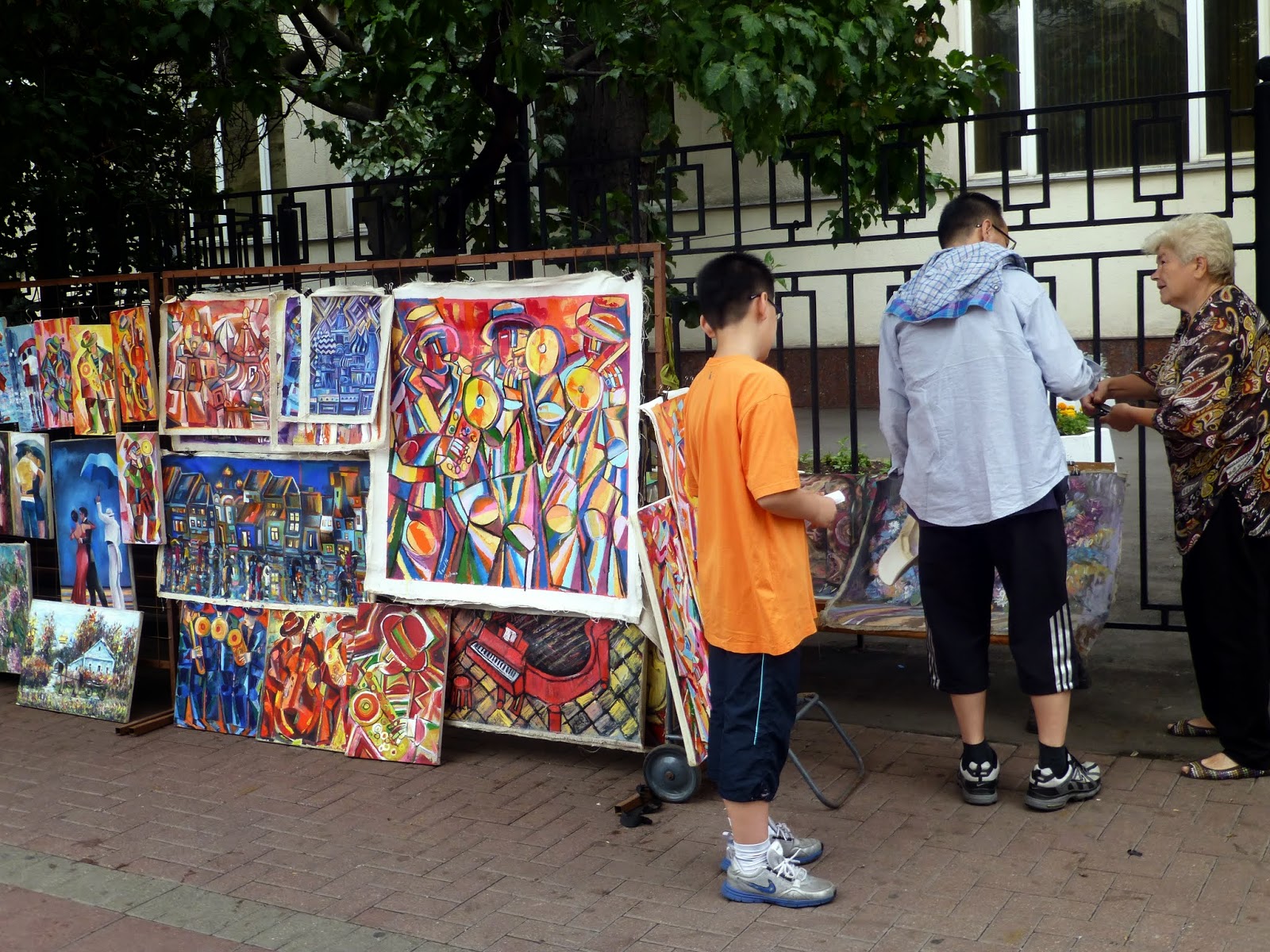We arrived Moscow late Thursday
evening, August 14th. Given
the speed with which we arranged this trip for Kunduz’ wedding, we had only
enough time to obtain an expedited 72 hour transit visa for Russia. Jim and I want to make the most of our three
nights and two days here, but that first night all we had energy for was an evening stroll before bed. By luck, we booked a fantastic
hotel. It's the Mercure Arbat, and is located in the historic central part of
Moscow at one end of Old Arbat street (at Smolenskaya Square).
Old Arbat street has quite a history. Dating back to the 15th century, it
may be one of the oldest surviving streets outside of the Kremlin. It has a famous past: Russian nobility had their homes there. And, it has an infamous past: When Ivan the Terrible established Russia’s
first secret police (the forerunner to today’s KGB), their headquarters were
located on Arbat street. Many a family
feared the release of the day’s orders issued from here for interrogations or killings of people suspected of treason.
 People walked arm and
arm in both directions. Individual
street musicians, including an old woman on crutches playing a balalaika,
performed for small groups of listeners. Portrait artists or
caricaturists call out to passers-by – and even one tattoo artist (although I never saw a person sit
down on his chair!) One woman had a cat
on a box – and as far as Jim and I could tell, people were paying money to pet
the cat!
People walked arm and
arm in both directions. Individual
street musicians, including an old woman on crutches playing a balalaika,
performed for small groups of listeners. Portrait artists or
caricaturists call out to passers-by – and even one tattoo artist (although I never saw a person sit
down on his chair!) One woman had a cat
on a box – and as far as Jim and I could tell, people were paying money to pet
the cat!
Jim and I walk to the end of Old
Arbat, turn around, and walk back slowly back to our hotel. A beautiful night. A great introduction to Moscow.












